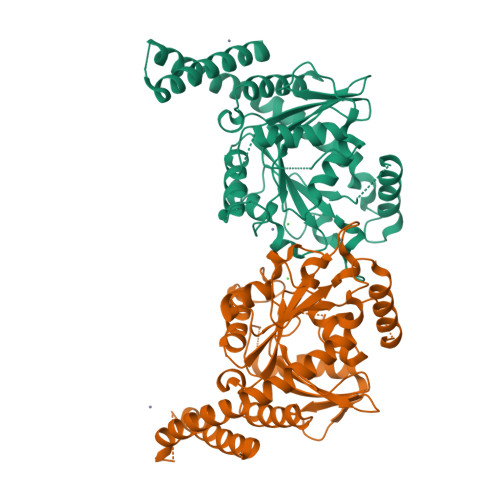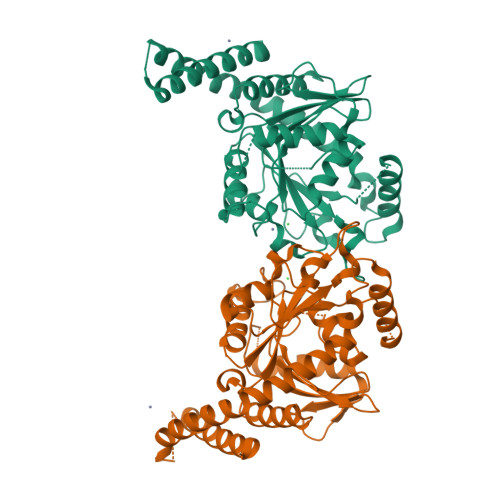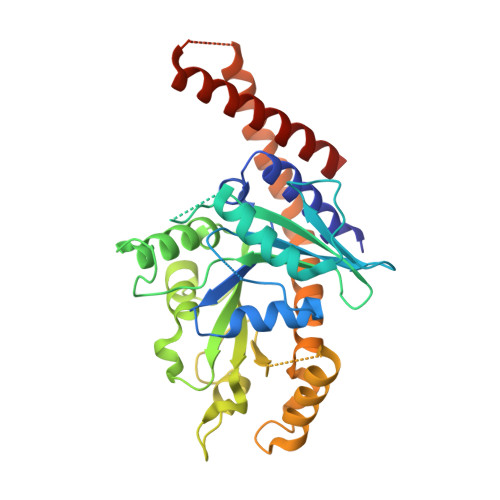Quantification and demonstration of the collective constriction-by-ratchet mechanism in the dynamin molecular motor.
Ganichkin, O.M., Vancraenenbroeck, R., Rosenblum, G., Hofmann, H., Mikhailov, A.S., Daumke, O., Noel, J.K.(2021) Proc Natl Acad Sci U S A 118
- PubMed: 34244431
- DOI: https://doi.org/10.1073/pnas.2101144118
- Primary Citation of Related Structures:
6S9A - PubMed Abstract:
Dynamin oligomerizes into helical filaments on tubular membrane templates and, through constriction, cleaves them in a GTPase-driven way. Structural observations of GTP-dependent cross-bridges between neighboring filament turns have led to the suggestion that dynamin operates as a molecular ratchet motor. However, the proof of such mechanism remains absent. Particularly, it is not known whether a powerful enough stroke is produced and how the motor modules would cooperate in the constriction process. Here, we characterized the dynamin motor modules by single-molecule Förster resonance energy transfer (smFRET) and found strong nucleotide-dependent conformational preferences. Integrating smFRET with molecular dynamics simulations allowed us to estimate the forces generated in a power stroke. Subsequently, the quantitative force data and the measured kinetics of the GTPase cycle were incorporated into a model including both a dynamin filament, with explicit motor cross-bridges, and a realistic deformable membrane template. In our simulations, collective constriction of the membrane by dynamin motor modules, based on the ratchet mechanism, is directly reproduced and analyzed. Functional parallels between the dynamin system and actomyosin in the muscle are seen. Through concerted action of the motors, tight membrane constriction to the hemifission radius can be reached. Our experimental and computational study provides an example of how collective motor action in megadalton molecular assemblies can be approached and explicitly resolved.
Organizational Affiliation:
Crystallography, Max Delbrück Center for Molecular Medicine in the Helmholtz Association, 13125 Berlin, Germany.


















